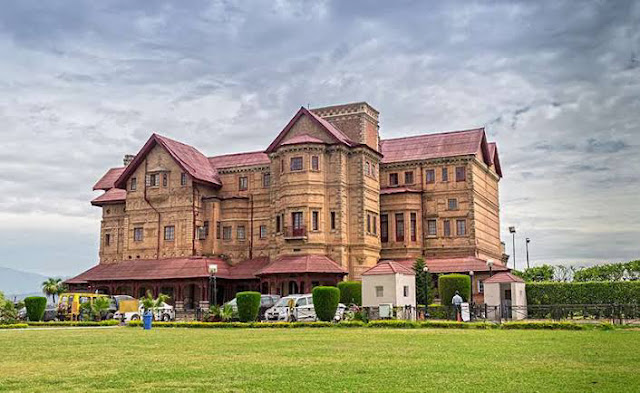After the death of Raja Amar Singh, the palace was abandoned for many years. In 1955, it was converted into a museum by Maharaja Karan Singh, the son of the last Maharaja of Jammu and Kashmir. The museum houses a collection of artifacts, including paintings, sculptures, and other works of art from across the region. Many of the artifacts date back to the Dogra period, which was the ruling dynasty of the region from the early 19th century until Indian independence in 1947.
The Amar Mahal Museum is also home to a large library, which houses rare and ancient manuscripts, as well as modern works on art, history, and culture. The museum and library are open to the public, and are a popular destination for tourists and locals alike.
In addition to its historical and cultural significance, the Amar Mahal Museum is also known for its stunning location, overlooking the Tawi River and the city of Jammu. The palace grounds are well-maintained, and visitors can enjoy a stroll through the gardens and take in the panoramic views of the surrounding area
Amar Mahal Museum step by step in torusim Guide
Location: The Amar Mahal Museum is located in Jammu city, which is the winter capital of the Indian state of Jammu and Kashmir.
Getting there: The nearest airport to Jammu is the Jammu airport, which is well-connected to major cities in India. Alternatively, you can also reach Jammu by train or bus.
Entrance fee: The entrance fee for the Amar Mahal Museum is INR 50 for Indian nationals and INR 100 for foreign nationals.
Opening hours: The museum is open from 10:00 AM to 5:00 PM on all days except for Mondays and public holidays.
Museum overview: The Amar Mahal Museum is housed in a historic palace that was built in the nineteenth century. The palace was the residence of the Dogra dynasty, who ruled the region for over 100 years.
Museum exhibits: The museum has a rich collection of artifacts, paintings, and sculptures that reflect the cultural heritage of the region. Some of the highlights of the museum include the Pahari miniature paintings, silverware, and manuscripts.
Palace tour: In addition to the museum exhibits, visitors can also take a guided tour of the palace to learn about its history and architecture. The palace has a unique blend of Rajasthani, Mughal, and European architectural styles.
Garden: The palace also has a beautiful garden that is spread over several acres. The garden has a variety of plants, flowers, and trees that are indigenous to the region.
Nearby attractions: If you have time, you can also visit other attractions in Jammu city, such as the Raghunath Temple, Bahu Fort, and the Mubarak Mandi Palace.
Overall, the Amar Mahal Museum is a must-visit destination for anyone interested in the history and culture of the region



Comments
Post a Comment